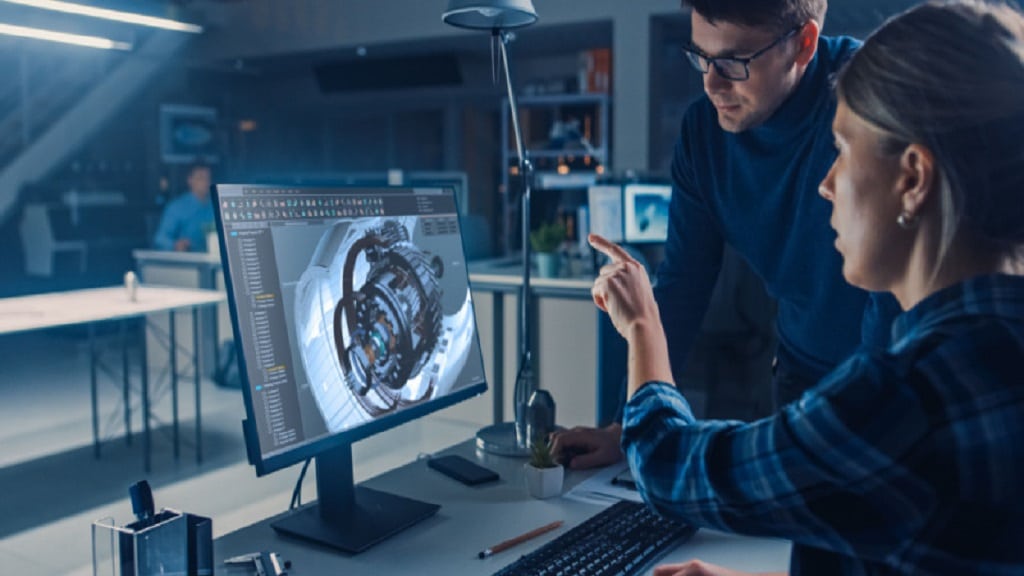
How CAD Program Works
How CAD program Works? The acronym "computer-aided design and drafting" (CADD) is another name for "computer-aided design" (CAD). Computer-aided design uses software that runs on computers to aid in the design process. Computer-aided design (CAD) software is commonplace in the engineering and design industries. Using computer-aided design (CAD) software, it is possible to create both two-dimensional (2-D) drawings as well as three-dimensional (3-D) models.
Using 3D computer-aided design software, which makes it easy to share, simulate, review, and update designs, you may rapidly bring fresh, one-of-a-kind products to market.
The traditional "pencil on paper" design and engineering approach, also called manual drawing, has been largely replaced by CAD software in recent years. In the past, designers relied on tools such as t-squares and protractors. PRONTO, the first commercial numeric value-control programming system, was developed by Dr. Patrick J. Hanratty in 1957. This system is recognized as the catalyst that led to computer-aided design (CAD) development. Working at the Lincoln Laboratory of the Massachusetts Institute of Technology (MIT), Ivan Sutherland developed SKETCHPAD in 1960. This program demonstrated the practicality and basics of computer-aided technical drawing. When CAD was invented, the machines were so expensive that using it as a business option differed from what was in the cards. As a result of the advent of microprocessors and minicomputers in the later half of the 20th century and the subsequent increase in processing power, particularly after the onset of cloud computing, engineers can now use CAD files that properly show the object's dimensions and attributes. This is made possible by the introduction of cloud computing.
The Graphical User Interface (GUI) transfers data in a format suitable for the graphics kernel from the input devices. The graphics kernel generates the geometric entities, which then commands the graphics card to display them on the graphical user interface (GUI).
Using the best CAD software, designers may conceptualize and draft their projects digitally, then print them out and store them digitally for later modifications. CAD Programm for mechanical design uses either variable-based visuals or, in certain circumstances, raster graphics to depict the objects of conventional drafting, demonstrating the general look of planned products. However, there is more to it than filling out forms. Materials, methods, measurements, and tolerances must be expressed in the CAD output according to application-specific rules, exactly as in hand-drafted engineering and technical drawings. Moreover, as subcontractors add more specifics to the pictures, the program considers the interactions between different materials and stakeholders.
The traditional "pencil on paper" design and engineering approach, also called manual drawing, has been largely replaced by CAD software in recent years. In the past, designers relied on tools such as t-squares and protractors. PRONTO, the first commercial numeric value-control programming system, was developed by Dr. Patrick J. Hanratty in 1957. This system is recognized as the catalyst that led to computer-aided design (CAD) development. Working at the Lincoln Laboratory of the Massachusetts Institute of Technology (MIT), Ivan Sutherland developed SKETCHPAD in 1960. This program demonstrated the practicality and basics of computer-aided technical drawing. When CAD was invented, the machines were so expensive that using it as a business option differed from what was in the cards. As a result of the advent of microprocessors and minicomputers in the later half of the 20th century and the subsequent increase in processing power, particularly after the onset of cloud computing, engineers can now use CAD files that properly show the object's dimensions and attributes. This is made possible by the introduction of cloud computing.
How CAD program Works?
For a CAD system to function properly on your computer, you must have the best CAD software and, in some cases, a graphics card installed on your computer. The graphics kernel of a 3d CAD software program is the application's processing core. The graphical user interface, sometimes called the GUI, is a vital 3d CAD software-free component. The CAD geometry is displayed through the GUI, which also takes input from the user. Computer-aided design, sometimes known as CAD, refers to creating computer models that are constrained geometrically. On the computer screen, these models will frequently display a 3d representation of either a single component or the entire system. The fact that developers can adapt the model by adjusting to the appropriate parameters makes the lives of designers and engineers much simpler. This suggests that the qualities and associations fed into geometry, shape, and size can be modified. Suppose you employ solid geometrical modeling, which demands that you put material before anything else. In that case, the geometric will respond to forces analogously to real-world things. The most common input devices to be used are the mouse and the keyboard; however, digitizers and trackballs are also rarely employed.The Graphical User Interface (GUI) transfers data in a format suitable for the graphics kernel from the input devices. The graphics kernel generates the geometric entities, which then commands the graphics card to display them on the graphical user interface (GUI).
Using the best CAD software, designers may conceptualize and draft their projects digitally, then print them out and store them digitally for later modifications. CAD Programm for mechanical design uses either variable-based visuals or, in certain circumstances, raster graphics to depict the objects of conventional drafting, demonstrating the general look of planned products. However, there is more to it than filling out forms. Materials, methods, measurements, and tolerances must be expressed in the CAD output according to application-specific rules, exactly as in hand-drafted engineering and technical drawings. Moreover, as subcontractors add more specifics to the pictures, the program considers the interactions between different materials and stakeholders.
